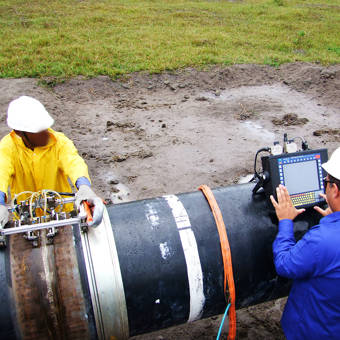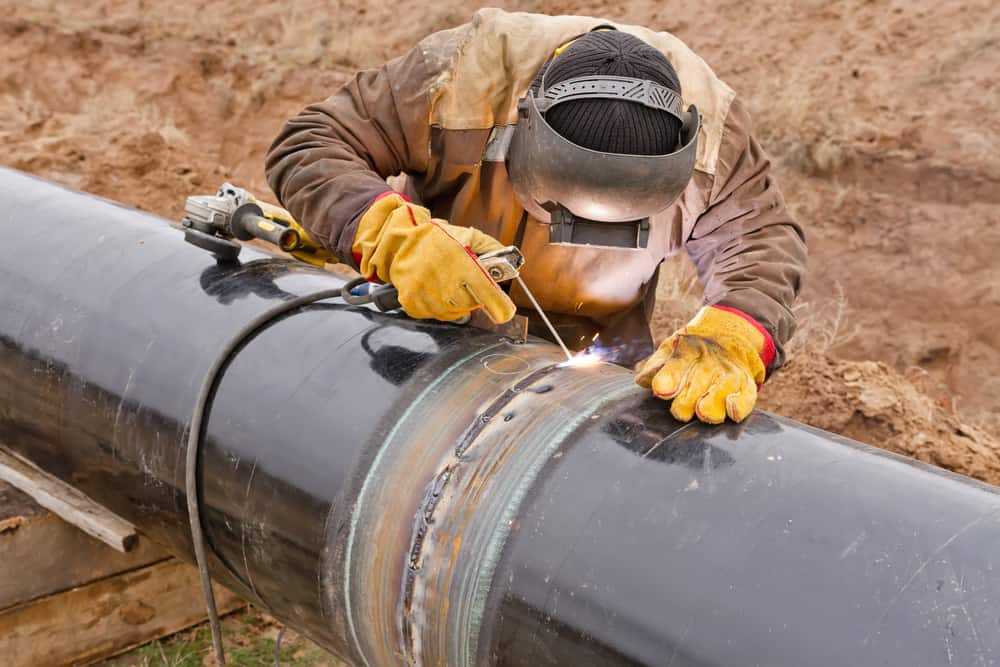Stay Code-Compliant: Expert Pipeline Welding Inspection Tailored to Your Needs
Wiki Article
Comprehensive Introduction of Pipe Welding Examination Treatments
In the realm of pipe construction, making sure the honesty and safety and security of bonded joints is critical. Pipe welding examination treatments play an essential function in guaranteeing that bonded links fulfill rigorous sector standards and requirements. From careful pre-welding evaluations to comprehensive post-weld assessments, a distinct assessment procedure is crucial for keeping the architectural sturdiness of pipes. Comprehending the ins and outs of welding assessment treatments is not only a regulative demand yet likewise a fundamental aspect of upholding the integrity of these crucial infrastructures.Pre-welding Assessment Preparations
Prior to starting the welding process, extensive pre-welding inspection preparations are essential to ensure the honesty and top quality of the weld joint. These preparations include a careful evaluation of the materials to be bonded, the welding devices, and the work environment. By performing detailed pre-welding assessment preparations, possible concerns can be recognized and solved early on, leading to reputable and top quality weld joints.Welding Treatment Credentials
Detailed pre-welding examination prep work lay the foundation for the important process of Welding Treatment Credentials, making sure the integrity and top quality of the weld joint. Welding Procedure Credentials (WPQ) is a crucial action in the welding procedure that includes screening and certifying welding treatments to ensure they meet certain standards and demands. The WPQ procedure usually includes welding treatment requirements advancement, welding treatment qualification testing, and paperwork of the results.During welding treatment specification advancement, vital details such as the welding procedure, welding products, joint layout, and welding criteria are defined to develop a detailed procedure. Ultimately, welding treatment credentials screening is carried out to validate the suggested treatment's integrity. This testing often includes welding examination discount coupons that are subjected to different mechanical and non-destructive tests to evaluate the weld's high quality and adherence to the defined criteria.
In-process Weld Examination
During the welding procedure, in-process weld examination plays an essential role in making sure the top quality and honesty of the weld joint - Pipeline Welding Inspection. This sort of examination involves keeping track of the welding parameters, assessing the weld grain development, and finding any kind of possible flaws or suspensions as they happen. By carrying out in-process weld assessments, welding operators can quickly deal with any type of problems that may develop, thus making sure and stopping additional defects that the last weld fulfills the called for requirementsCommon techniques made use of for in-process weld examination include aesthetic assessment, fluid penetrant screening, magnetic bit screening, ultrasonic testing, and radiographic screening. Overall, in-process weld assessment is essential for keeping the high quality and reliability of welded pipes.
Non-destructive Screening (NDT)
Non-destructive Screening (NDT) is an essential technique used in pipe welding evaluation to examine the honesty of visite site weld joints without triggering damages to the bonded structure. By using different NDT strategies, assessors can assess the quality of welds and determine any kind of flaws or stoppages that might compromise the architectural strength of the pipe. Common NDT techniques made use of in pipeline welding evaluation consist of Radiographic Testing (RT), Ultrasonic Testing (UT), Magnetic Bit Examining (MPT), Fluid Penetrant Screening (LPT), and Visual Testing (VT)RT includes the usage of X-rays or gamma rays to create images of the interior structure of the weld, permitting examiners to identify flaws such as porosity, cracks, or incomplete fusion. Furthermore, VT entails visual evaluation of welds to identify any type of visible flaws.
Post-weld Assessment and Paperwork


Documents of post-weld assessment searchings for is necessary for maintaining quality assurance records and ensuring conformity with industry standards and laws. In-depth records ought to consist of information concerning the assessment methods utilized, the area and nature of any type of issues found, and any kind of restorative activities taken - Pipeline Welding Inspection. Proper paperwork not just serves as a record of the weld's high quality yet also help in future upkeep and inspection processes
This Site
Verdict

In conclusion, pipe welding assessment treatments play a crucial role in making sure the high quality and honesty of welds. In general, adherence to appropriate assessment methods is vital to the success of pipe welding tasks.
From thorough pre-welding inspections to extensive post-weld assessments, a well-defined inspection process is essential for keeping the structural stability of pipelines. By conducting in-process weld inspections, welding drivers can without delay attend to any kind of concerns that might occur, thus ensuring and protecting against more flaws that the final moved here weld fulfills the required specifications.
Usual approaches utilized for in-process weld inspection consist of visual inspection, fluid penetrant testing, magnetic particle testing, ultrasonic screening, and radiographic testing.Non-destructive Testing (NDT) is an important method used in pipe welding inspection to analyze the honesty of weld joints without creating damage to the bonded structure. Post-weld examination includes numerous approaches to examine the welds for defects, consisting of visual examination, dye penetrant screening, magnetic bit testing, ultrasonic screening, and radiographic testing.
Report this wiki page